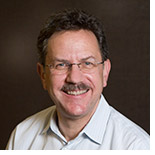 How tissue and organ sizes are specified is one of the great unsolved mysteries in biology. Recently, Donald Bren Professor Arthur D. Lander, Developmental and Cell Biology, conducted research that sheds some light on how tissue and organ size are controlled.
How tissue and organ sizes are specified is one of the great unsolved mysteries in biology. Recently, Donald Bren Professor Arthur D. Lander, Developmental and Cell Biology, conducted research that sheds some light on how tissue and organ size are controlled.
Working together with engineers Genti Buzi and Mustafa Khammash from Switzerland, Professor Lander modeled the effects of various kinds of disturbances on the behaviors of stem cell lineages. They found that the simplest and most frequently studied form of lineage feedback—renewal control—helps tissues achieve appropriate steady-state size, but suffers from several serious dynamic drawbacks, such as wild swings and oscillations, in response to certain kinds of perturbations.
The researchers found that introducing branches into cell lineages creates a way to circumvent all such problems. The type of feedback that achieves such performance, “fate control,” involves driving cells down alternative lineage branches at the expense of both stem cell renewal and (primary) differentiation.
The existence of this strategy provides a dynamics-based justification for the kinds of branched and layered lineages that are observed in many tissues and organs. Professor Lander’s study was published in a recent issue of BMC Biology.
If you’d like to learn more about how you can support the faculty and research at the Biological Sciences School, please contact Andrew DiNuzzo at 949.824.2734 or adinuzzo@uci.edu.
